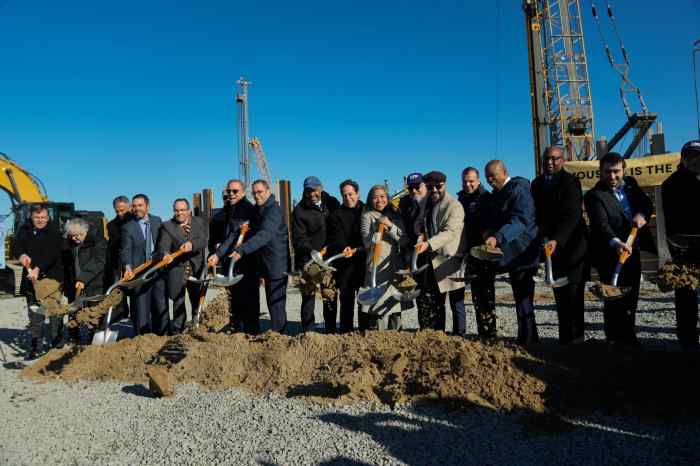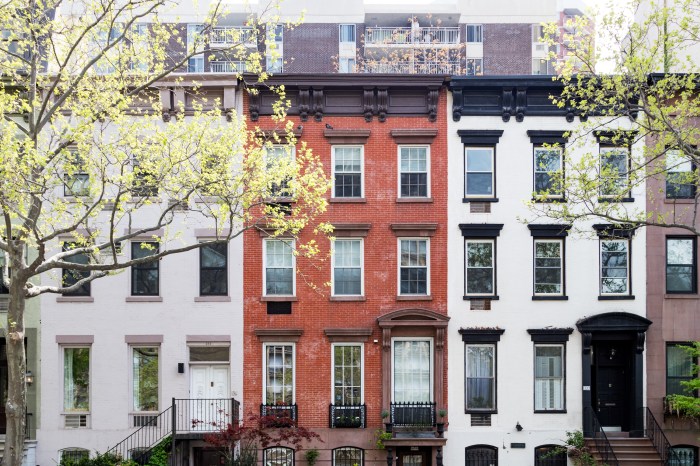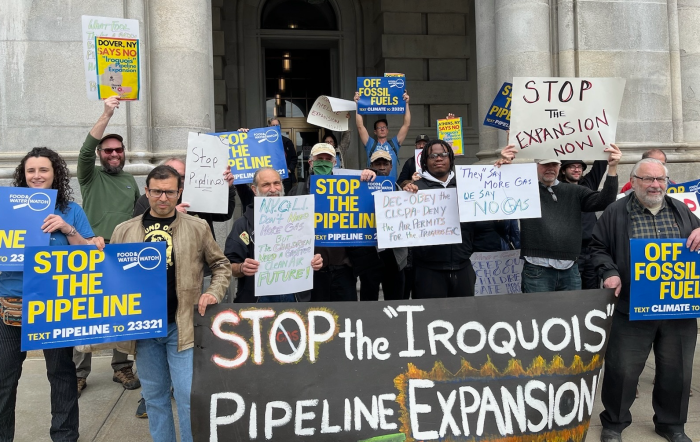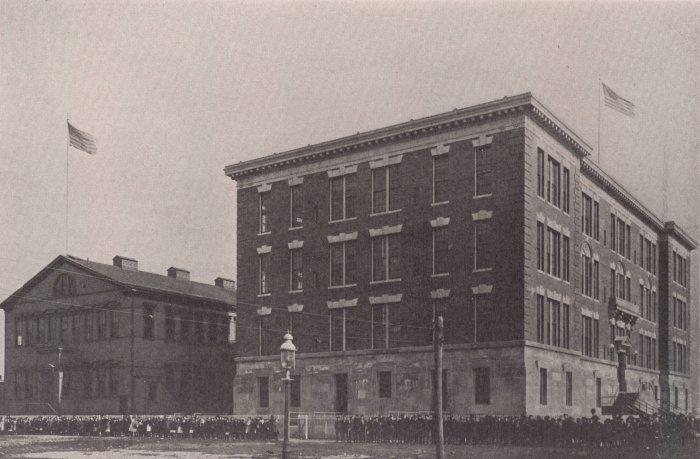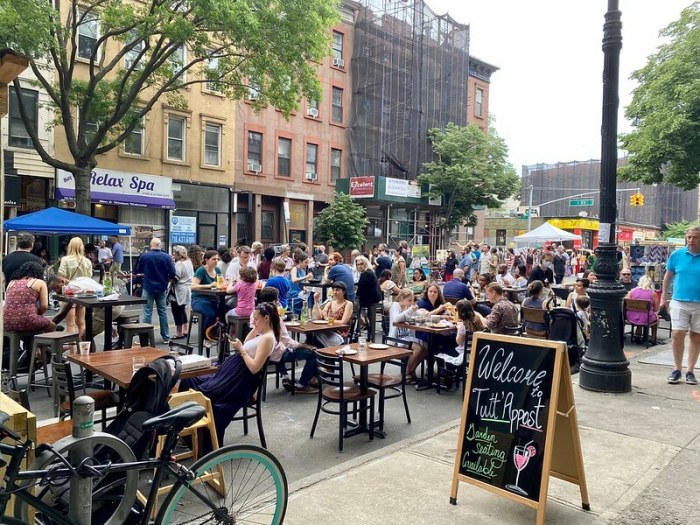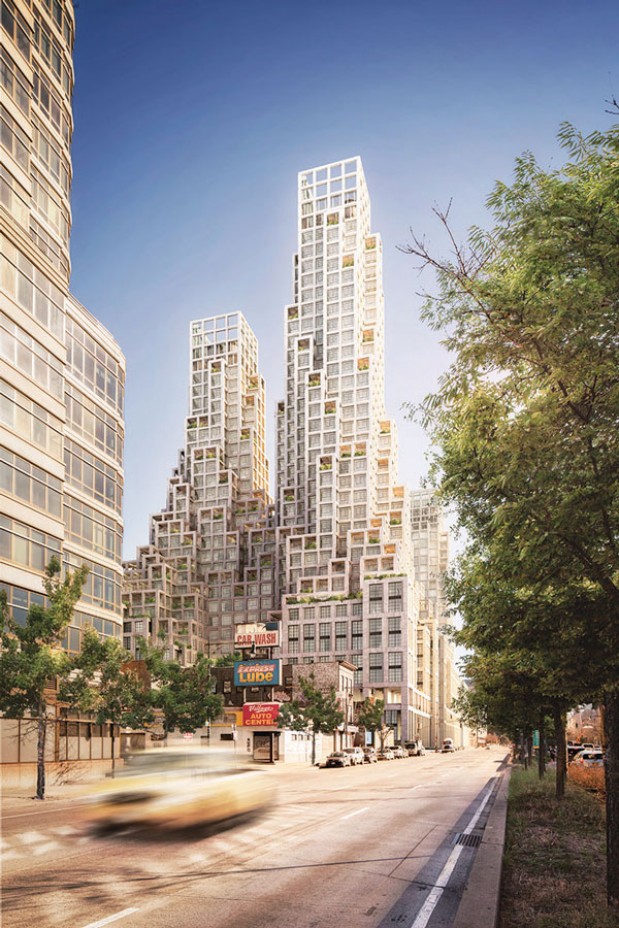
BY ANDREW BERMAN | In June 2013, the state Assembly and Senate passed legislation promoted by the Hudson River Park Trust that, for the first time, would allow the sale and transfer of “air rights” from the park for development one block inland. This legislation allows for increases in the size of permitted development in our neighborhood, while generating revenue for the park. Many, including the Greenwich Village Society for Historic Preservation, decried the scheme’s potential for enabling overdevelopment, as well as the utter lack of basic information about how many air rights the provision actually created.
Adding insult to injury, measures to protect nearby areas from overdevelopment, such as G.V.S.H.P.’s proposed rezoning of the South Village, were being stonewalled by the city at the same time. In response, a coalition of more than 50 neighborhood groups generated a list of alternative means for funding the park — some utilizing air rights, some not — that would not require increasing the size of permitted development in our community.
Nearly three years later, virtually no progress has been made on any of these fronts except one: The city is now backing a developer’s plan to massively increase the allowable size of a development on the three-block St. John’s Terminal site at Houston and West St., partly by permitting air rights transfer from the park.
Yet, still no information has been offered about the amount of available air rights the park actually has, meaning this massive project is about to go through the public approval process without any clue as to how much more increased development potential would remain for our neighborhood — and without any opportunities for limiting it. Neither city nor state officials have taken any steps toward pursuing alternative methods for funding the park that community groups like G.V.S.H.P. put forward. And the city continues to block zoning measures that would protect nearby neighborhoods.
If you’re unfamiliar with the development proposal at the heart of this, it calls for a five-building, 2-million-square-foot-combination of residences (with 30 percent affordable units, though these will occupy only 25 percent of the residential floor area), hotels, event space and large-scale retail, including possibly an enormous underground big-box store. At its tallest, the development would reach the same height as the Trump Soho condo-hotel, but in sheer size (total square footage) would be the equivalent of six Trump Sohos, or about three-quarters the size of the Empire State Building.
To enable this, the city would have to change the zoning for the site to allow residential and hotel development, which are both currently prohibited. It would also have to increase the allowable size of development on the site by 70 percent, including 200,000 square feet of air rights from nearby Pier 40, for which the developer would pay $100 million toward repairing the pier the massive W. Houston St. pier.
This is an extraordinarily good deal for this developer. Based upon an economic analysis accepted by the city for a development site one block north of St. John’s, allowing hotel and residential development on this property and increasing the size of allowable development by 70 percent should more than triple the project’s worth, generating several billion dollars for the developer.
While funding the repair of Pier 40’s playing fields and providing affordable housing are arguably important public benefits, it’s equally arguable that these goals could be achieved without such a tremendous giveaway to this developer, and with much less of an impact upon the surrounding neighborhood and park.
Perhaps most disturbingly, unless other measures are put in place, this enormous development could be just the tip of the iceberg of development enabled by Hudson River Park air-rights sales.
It’s unconscionable that the city is moving ahead with this massive scheme without putting in place long-sought protections for nearby residential areas, like the South Village, currently dealing with huge development pressures and totally inappropriate zoning that allows 300-foot-tall towers.
And it simply strains credulity that city officials could consider this plan, much less approve it, without a full accounting of the number and location of air rights in the park, so that we would know how much more additional development from air rights could potentially still come to our neighborhood in the future. In fact, we would strongly argue that if this scheme is approved, a mechanism for ensuring that there will be no further air-rights transfers from Pier 40 into the surrounding neighborhood should be included.
The Trust has been particularly resistant to the last possibility, claiming that, though Pier 40 would still have unused air rights after this deal, there would simply be “no place else for them to go” in the Village.
If only this were true. The Trust knows full well that there are several underbuilt sites in the northern end of the Village currently without zoning restrictions to prohibit air-rights transfers if authorized. And the claim that the West Village’s contextual zoning restrictions and height limits, which G.V.S.H.P. successfully secured in 2005 and 2010, guarantee that no further air rights can be transferred, is disingenuous, at best.
As the Trust well knows, those zoning protections could be undone by the same rezoning process now being considered for the St. John’s site, which is a necessary component of any air-rights transfer. And there are other vulnerabilities, as well. For example, right now, the mayor is proposing an across-the-board weakening of the contextual zoning protections for the West Village and many other parts of the city. Though that particular proposal would be unlikely to allow any substantial transfer of air rights in the Village, it illustrates how even these existing protections are vulnerable to weakening or change, and do not provide immunity from future air-rights incursions.
To be clear, something very large and impactful will almost inevitably be built on the St. John’s site, even if the city does not approve a rezoning. A tall office tower with large amounts of event and retail space could be constructed right now without any public approvals. And without a rezoning, there would be no funding for Pier 40 and no permanent affordable housing.
But it’s a false dichotomy to say that the current proposal or a large “as of right” development with no public benefits are our only choices.
The proposed 70 percent increase in allowable size of the development, combined with the zoning change to allow much more profitable residential and hotel uses, is unnecessarily generous, and should be scaled back to the minimum necessary to fund the desired public amenities. A giant underground big-box store should never be approved, and even the current plan for 200,000 square feet of event and retail space should be pared back and limited to smaller stores with a local rather than regional scope.
A full accounting of how many unused development rights would remain in the park for possible future transfer must also be provided, along with real, concrete guarantees that no further transfers could come from Pier 40. And the city must move ahead with long-overdue zoning protections for the nearby South Village.
The administration cannot be allowed to continue to accommodate big real estate interests so generously with development-friendly rezonings, while continuing to ignore the needs and concerns of local communities. We have one chance to do this right; let’s not miss the opportunity.
Berman is executive director, Greenwich Village Society for Historic Preservation









